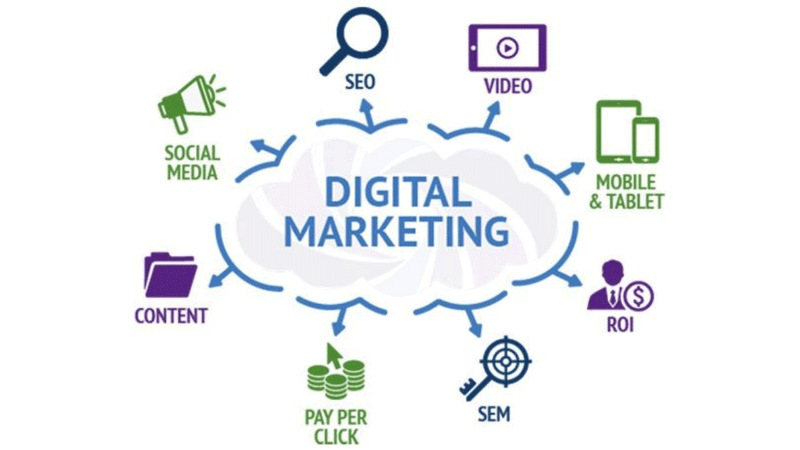Enhance Individual Experience and Drive Traffic With Responsive Website Design
In today's electronic landscape, where customers are accessing internet sites from a wide variety of tools, receptive internet style has ended up being much more vital than ever. With its capacity to adjust and effortlessly adjust to various screen dimensions, responsive style not just boosts user experience but also drives website traffic to your website.
Why Responsive Website Design Issues
Responsive web style is an important facet of modern-day internet advancement as a result of its capability to make sure optimum customer experience throughout various gadgets and display sizes. With the expansion of smartphones, tablets, and other smart phones, it has actually ended up being critical for sites to adapt and supply smooth functionality no matter of the gadget being made use of.
The primary factor why responsive website design matters is that it enables individuals to have a satisfying and consistent browsing experience, no matter of the device they are making use of. A receptive site automatically readjusts its layout, content, and layout components to fit the display dimension and resolution of the tool, guaranteeing that users can easily navigate and connect with the site without any kind of inconvenience or irritation.
In addition, receptive website design also plays a substantial duty in seo (SEO) Internet search engine, such as Google, focus on internet sites that are mobile-friendly and responsive in their search results page. By integrating receptive design principles, sites can boost their presence and ranking, resulting in increased organic traffic and prospective clients.

Boosting User Involvement Via Responsive Style
Enhancing individual involvement is a key goal of receptive design, as it makes sure that customers can quickly access and communicate with web site web content on any device. With the enhancing use tablet computers and smart devices, it is crucial for sites to adapt to different screen dimensions and resolutions. Receptive layout enables sites to instantly change their layout and content to offer a seamless customer experience throughout tools.
Among the major methods receptive style enhances individual interaction is by decreasing tons times. With a responsive web site, customers do not need to await different mobile versions to lots, causing much faster accessibility to content. This better speed causes greater user contentment and motivates them to spend more time on the website.
Furthermore, receptive layout improves customer involvement by boosting navigating and user interface (Web Design Carlsbad). When a web site is designed responsively, menus and buttons are enhanced for touch communications, making it easier for users to browse and interact with the site on their mobile phones. This instinctive and straightforward experience keeps users engaged and encourages them to discover more of the site
In addition, responsive design enables better web content visibility and readability. By adapting the layout and font style sizes to different devices, responsive websites make sure that individuals can conveniently recognize the material and read. This enhances user involvement by lowering the demand for scrolling or zooming to read the message.
Boosting Internet Site Traffic With Responsive Website Design
With the growing popularity of mobile phones, having a web site that is receptive to various display dimensions and resolutions is necessary for driving boosted traffic. In today's electronic landscape, individuals are accessing internet sites from a selection of gadgets such as mobile phones, tablets, and home computer. Each of these gadgets has various display sizes and resolutions, and if your web site is not designed to adapt to these variations, it can lead to a poor user experience and a loss of possible website traffic.
Responsive website design makes sure that your website looks and works ideally throughout all devices. By making use look at this site of adaptable grids, fluid photos, and media questions, responsive style enables your website to instantly readjust its navigation, content, and design to fit any kind of screen size. This suggests that customers will have a seamless browsing experience no matter whether they are utilizing a large desktop or a small mobile phone computer.
Key Aspects of Reliable Responsive Design
Reliable receptive design includes a number of essential elements that guarantee a seamless user experience across various i thought about this gadgets. One of these elements is flexible grids and layouts. By utilizing family member devices like percentages as opposed to fixed systems like pixels, developers can create designs that scale and adjust to fit various display sizes. This allows web content to be displayed in a visually enticing and readable way on any kind of device.
One more vital element is media queries. These allow designers to apply various designs and formats based upon the characteristics of the user's gadget, such as screen size and positioning. By utilizing media questions, developers can maximize the discussion of web content for each gadget, making sure that it is legible and conveniently obtainable.
Receptive photos are additionally critical in reliable receptive style. Pictures that are as well big can decrease page load times on mobile devices, while photos that are also tiny might appear pixelated on larger screens. By utilizing strategies such as receptive picture resizing and lazy loading, developers can make sure that pictures are appropriately sized and optimized for each and every tool.
Finally, efficient responsive layout entails a mobile-first technique. This implies developing and prioritizing material for smart phones initially, and after that broadening and enhancing the layout for bigger displays. This strategy ensures that one of the most crucial content is conveniently available on smaller displays, while still offering an abundant experience on larger devices.
Finest Practices for Executing Receptive Website Design
Carrying out responsive internet style calls for cautious consideration of numerous best techniques to guarantee an optimum individual experience throughout different tools. Here are some vital best techniques to follow when applying responsive internet layout.
To start with, it is important to focus on mobile users. With the boosting dominance of smart phones, making for mobile-first has ended up being crucial. Start by creating for smaller sized screens and afterwards gradually boost the layout for larger screens.

Another crucial best technique is to optimize photos for different display resolutions. Large pictures can slow down the packing time of your website, particularly on mobile phones with slower connections. Usage responsive photos that can be resized based on the gadget's display resolution to improve efficiency.
Additionally, examination your internet site on different tools and screen sizes to make certain a smooth and constant experience. There are numerous screening tools readily available that can aid you identify any concerns and make required changes.
Finally, prioritize usability and ease of access. Make sure address that your internet site is simple to browse, with clear and succinct content. See to it that your website is available to individuals with impairments and follows ease of access guidelines.
Conclusion
To conclude, responsive website design plays a critical role in boosting user experience and driving web traffic to sites. By adopting responsive design principles, web sites can guarantee optimal seeing experiences across various devices, leading to boosted user involvement (The Ad Firm digital marketing). Responsive design can likewise contribute to higher internet site web traffic as it boosts search engine positions and facilitates simple sharing of content. Services must concentrate on implementing the essential aspects and best practices of receptive style to efficiently meet the demands of modern users.
Enhancing customer interaction is a crucial objective of receptive layout, as it makes sure that users can quickly gain access to and communicate with site content on any tool. Responsive style makes it possible for sites to automatically readjust their design and content to supply a smooth user experience across devices.
Furthermore, receptive style enhances individual engagement by enhancing navigating and customer interface.Receptive images are likewise vital in effective responsive design. By embracing receptive layout concepts, websites can guarantee ideal checking out experiences throughout various tools, leading to increased user engagement.